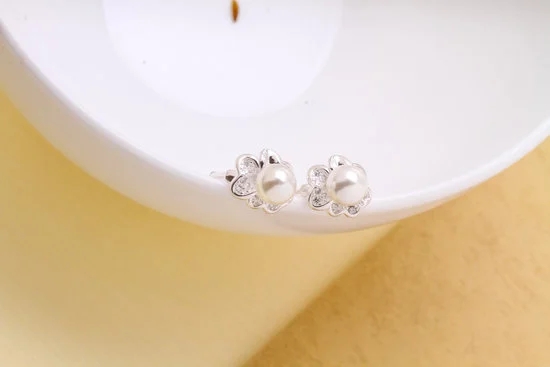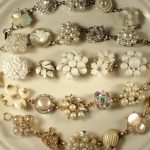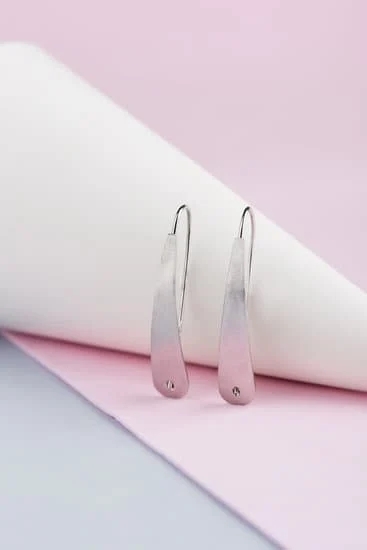Handmade precious jewelry has long been cherished for its exquisite craftsmanship and timeless allure. From metalworking to beading, artisans have been crafting unique pieces that tell stories and evoke emotions. This article delves into the art of handmade jewelry, exploring the intricate craftsmanship that goes into creating these precious treasures.
The history of precious materials in jewelry making is a fascinating journey that dates back centuries. From ancient civilizations to modern-day artisans, the use of materials like gold, silver, and gemstones has played a significant role in the evolution of handmade jewelry. This section will take a closer look at the historical significance of these materials and their enduring appeal in the craft.
In addition to the historical aspect, this article will also touch on finding inspiration for handmade jewelry. Whether it’s drawing from nature, cultural influences, or personal stories, artisans often find creative inspiration from various sources to create one-of-a-kind pieces. This exploration of inspiration adds depth and meaning to each handmade creation.
The History of Precious Materials in Jewelry Making
The history of jewelry making dates back to ancient civilizations, where handmade precious jewelry was created using a variety of materials. Throughout history, precious materials such as gold, silver, diamonds, pearls, and gemstones have been prized for their beauty and rarity, making them the perfect choice for creating exquisite pieces of jewelry.
Ancient Civilizations
In ancient Egypt, jewelry was not only a form of adornment but also had religious and symbolic significance. Gold was highly valued and used to create intricate pieces that were worn by both men and women. In ancient Greece, jewelry was often adorned with pearls and colored gemstones such as emeralds and sapphires. The Romans were known for their extensive use of precious metals like gold and silver in their jewelry making.
The Renaissance Period
During the Renaissance period, there was a resurgence in the popularity of jewelry making. This era saw an increase in the use of gemstones such as rubies, emeralds, and diamonds in intricate designs. Jewelry makers began experimenting with new techniques and incorporating nature-inspired motifs into their creations.
The Modern Era
In more recent times, advancements in technology have allowed for greater creativity and innovation in handmade precious jewelry making. While traditional materials like gold and silver remain popular choices for crafting jewelry, contemporary artisans are also exploring alternative materials such as titanium and stainless steel to create unique pieces that appeal to modern tastes.
The rich history of using precious materials in jewelry making serves as a testament to the enduring allure of handmade precious jewelry. Each piece tells a story of craftsmanship, creativity, and cultural significance that makes it worth investing in for those who appreciate fine artistry.
Unique Techniques
Handmade precious jewelry often involves unique techniques that have been passed down through generations. From metalworking to beading, artisans utilize a variety of skills to create stunning pieces of jewelry that stand out from mass-produced items. These techniques require patience, precision, and an artistic eye, making each piece of handmade jewelry a true work of art.
Some common unique techniques used in handmade precious jewelry include:
- Metalworking: Artisans use traditional methods such as forging, soldering, and casting to shape metals like gold, silver, and copper into intricate designs.
- Beading: This technique involves the meticulous process of threading tiny beads together to create colorful patterns and textures in jewelry pieces.
- Engraving: Hand engraving is a skillful practice that adds intricate details and personalization to metal surfaces, resulting in one-of-a-kind jewelry pieces.
These techniques require a high level of craftsmanship and attention to detail, resulting in truly unique handmade precious jewelry that cannot be replicated by mass production. Whether it’s the careful manipulation of metals or the delicate arrangement of beads, these techniques contribute to the individuality and beauty of each handmade piece.
Moreover, artisans often combine these techniques with their own creative vision and inspiration to produce breathtaking works of art. Each piece tells a story through its craftsmanship and design, making handmade precious jewelry not just an accessory, but a meaningful expression of creativity and skill.
Finding Inspiration
The Influence of Nature
Nature has long been a major source of inspiration for handmade precious jewelry artisans. From the intricate patterns found in leaves to the vibrant colors of flowers, nature offers an endless array of design ideas. Many handmade jewelry pieces are directly inspired by elements found in the natural world, and artisans often strive to capture the beauty and essence of these organic materials in their creations.
Cultural Influences
Cultural traditions and heritage have also played a significant role in shaping handmade precious jewelry designs. Different cultures have unique aesthetics, symbols, and materials that are deeply embedded in their history. Artisans often draw from these cultural influences to create pieces that celebrate the diversity and richness of our global heritage. For example, traditional motifs, patterns, and techniques from various cultures can be seen in handmade precious jewelry, adding depth and meaning to each piece.
Personal Stories
Handmade precious jewelry often carries personal meaning for both the artisan and the wearer. Artisans may infuse their own experiences, beliefs, or emotions into their creations, resulting in pieces that are deeply personal and expressive.
On the other hand, wearers often connect with handmade jewelry on a personal level, whether it’s through commemorative pieces that mark significant life events or simply finding resonance with a particular design or material. The storytelling aspect behind each piece adds an extra layer of significance to handmade precious jewelry.
The Importance of Ethical Sourcing in Handmade Jewelry
One of the key aspects of ethical sourcing in handmade jewelry is the use of conflict-free gemstones and metals. The mining and extraction of these precious materials have been associated with social and environmental issues, including child labor, unsafe working conditions, and ecological damage. By choosing to use ethically sourced gemstones and metals, artisans can help support responsible mining practices and contribute to positive change within the industry.
In addition to using conflict-free materials, ethical sourcing also involves supporting fair trade practices and ensuring that all individuals involved in the production process are treated fairly and receive fair compensation for their work. This not only benefits the artisans who create these beautiful pieces but also contributes to the overall well-being of communities around the world.
By being mindful of where their materials come from, artisans can create not just stunning jewelry, but also make a positive impact on the world around them.
| Ethical Sourcing | Impacts |
|---|---|
| Use of conflict-free gemstones and metals | Supports responsible mining practices |
| Supporting fair trade practices | Ensures fair compensation for workers |
Spotlight on Artisans
The craftsmanship behind handmade precious jewelry is often attributed to the skilled artisans who painstakingly create each piece. From selecting the finest materials to meticulously crafting each detail, these artisans infuse their expertise, passion, and creativity into every piece they make. Each handmade precious jewelry tells a story – not just of the wearer, but also of the artisan who dedicated their time and skill to bring it to life.
Many artisans draw inspiration from their cultural heritage, incorporating traditional techniques and motifs into their creations. Whether it’s a pair of earrings adorned with intricate filigree work or a necklace featuring hand-carved gemstones, these pieces showcase the rich history and artistic traditions of different cultures around the world. By supporting these artisans, collectors not only acquire unique and beautiful jewelry but also contribute to the preservation of age-old craftsmanship and traditions.
One can also find modern artists who are pushing boundaries by experimenting with innovative techniques and materials. From sculptural metalwork to contemporary designs that reflect personal narratives, these artisans are redefining what handmade precious jewelry can be. By understanding the stories behind each creation, collectors gain a deeper appreciation for the artistry and skill that goes into making these timeless pieces.
Tips for Caring for Handmade Precious Jewelry
Caring for your handmade precious jewelry is essential to ensure its longevity and beauty. Handmade jewelry often requires special attention and care due to the delicate craftsmanship and use of precious materials. Here are some tips to help you maintain the quality of your cherished pieces:
- Store your handmade precious jewelry in a safe place: When not wearing your handmade jewelry, it’s important to store it properly to prevent damage or tangling. Consider using a soft pouch or a lined jewelry box to protect it from scratches and dust.
- Avoid exposure to chemicals: Keep your handmade precious jewelry away from harsh chemicals such as perfumes, lotions, and cleaning products. Chemicals can cause discoloration, tarnishing, or even permanent damage to the metal and gemstones.
- Regular cleaning: Gently clean your handmade precious jewelry with a soft cloth or a specialized jewelry cleaning solution designed for the specific metal and gemstones. Avoid using abrasive cleaners or harsh brushes that can scratch the surface.
Taking proper care of your handmade precious jewelry not only preserves its beauty but also ensures that it can be enjoyed for years to come. By following these simple tips, you can maintain the quality and allure of your unique handcrafted pieces.
The Timeless Allure of Handmade Precious Jewelry
In conclusion, the timeless allure of handmade precious jewelry makes it an investment worth considering for anyone who appreciates unique and beautifully crafted pieces. The art of handmade jewelry involves a level of craftsmanship and attention to detail that simply cannot be replicated by mass-produced items. Each piece tells a story of the artisan’s dedication and passion, resulting in truly one-of-a-kind creations that hold a special significance.
Furthermore, the history of precious materials in jewelry making adds to the appeal of investing in handmade pieces. From traditional metals like gold and silver to rare gemstones, each material carries its own cultural and symbolic significance. By choosing handmade jewelry, you are not only supporting talented artisans but also preserving the tradition and heritage behind these precious materials.
Frequently Asked Questions
What Type of Handmade Jewelry Sells the Best?
Handmade jewelry that sells the best is often unique, personalized, and made with high-quality materials. People are drawn to one-of-a-kind pieces that reflect their individual style and personality.
Is Handmade Jewelry Worth More?
Handmade jewelry can be worth more than mass-produced jewelry because of the time, effort, and craftsmanship involved in creating each piece. Additionally, handmade jewelry often uses higher quality materials which contributes to its increased value.
What Is Handmade Jewellery Called?
Handmade jewellery is simply called “handmade jewellery.” This term encompasses all types of jewelry that are crafted by hand, whether it’s beaded bracelets, metalwork earrings, or intricate necklaces. The term emphasizes the personal touch and artistry involved in creating each piece.

Welcome to my jewelry blog! My name is Sarah and I am the owner of this blog.
I love making jewelry and sharing my creations with others.
So whether you’re someone who loves wearing jewelry yourself or simply enjoys learning about it, be sure to check out my blog for insightful posts on everything related to this exciting topic!





